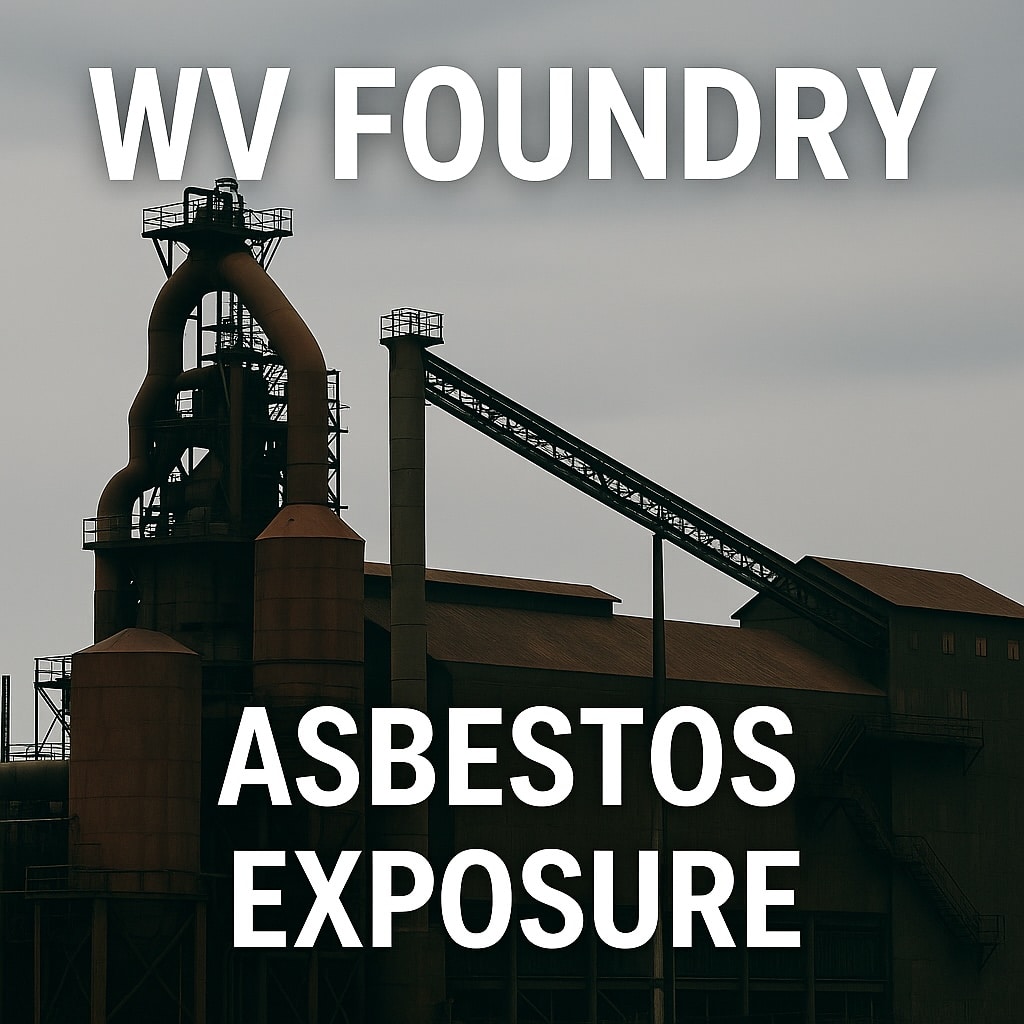WV Foundry Asbestos Exposure has endangered generations of West Virginia workers. Across steel and iron foundries in Weirton, Wheeling, Parkersburg, and Huntington, asbestos was used in furnace linings, refractory brick, pipe and boiler insulation, gaskets, and heat shields. When these materials were cut, removed, or disturbed during maintenance and shutdowns, they released microscopic fibers that can cause mesothelioma, asbestos‑related lung cancer, and asbestosis decades later.
How exposure happened inside WV foundries
Foundry crews faced extreme heat and constant repairs. Common fiber‑releasing tasks included replacing refractory in furnaces and ladles, grinding or scraping old gaskets, repacking pumps and valves, and pulling aged insulation from steam lines. Molders, coremakers, pourers, millwrights, pipefitters, and electricians all worked near dust‑generating equipment; even clerical staff on the shop floor could inhale airborne fibers carried through ventilation.
Take‑home exposure that reached families
The risk did not end at the time clock. Fibers clung to coveralls, boots, and tool bags and traveled home in cars. Spouses handling laundry and children greeting parents after shifts were unknowingly exposed. Many West Virginia secondary‑exposure cases arise decades later, long after the original foundry job ended.
Who can file and what you may recover
People diagnosed with mesothelioma, asbestos‑related lung cancer, or asbestosis after foundry work—or from household (secondary) exposure—may pursue compensation. Recoverable damages can include medical bills, travel for treatment, lost wages, loss of household services, and pain and suffering. Wrongful‑death claims are available to eligible families after a loss. Acting promptly matters because West Virginia claims are subject to strict filing deadlines.
What a WV mesothelioma lawyer does for foundry cases
Your attorney reconstructs your work and product history, identifies asbestos‑containing materials used at specific plants, locates purchase orders and MSDS data, and secures coworker testimony. The goal is straightforward: prove exposure, connect it to responsible companies, and move your claim efficiently.
Helpful resources:
FAQ – WV Foundry Asbestos Exposure
Q: Which foundry tasks were most hazardous?
A: Refractory tear‑outs, insulation removal, valve and pump repacking, gasket grinding, and furnace or ladle repairs routinely released fibers.
Q: I never handled asbestos directly—can I still have a case?
A: Yes. Proximity exposure from nearby maintenance or dust‑contaminated air can be enough if evidence ties your job site and time frame to asbestos use.
Q: What if my illness appeared 30–40 years later?
A: That’s common. Asbestos diseases have long latency. West Virginia generally measures filing deadlines from diagnosis (or date of death for wrongful‑death).
Q: Can family members bring claims for take‑home exposure?
A: Yes. If fibers were carried home on work clothing or gear and a family member later developed mesothelioma or another asbestos disease, a claim may be viable.
Q: Do I need records from the old plant?
A: They help, but your lawyer can also use coworker affidavits, product catalogs, site maps, union records, and historic purchasing documents.
Talk to a lawyer now
If you or a loved one is facing illness linked to WV Foundry Asbestos Exposure, don’t wait. Call 412‑781‑0525 or start a free case review via our secure form:
Check If Your Family Was Exposed
Get your free guide instantly + a confidential case review.
🔒 100% Confidential. No obligations.
We know West Virginia foundries, products, and proof—and we’ll move quickly to protect your claim.

